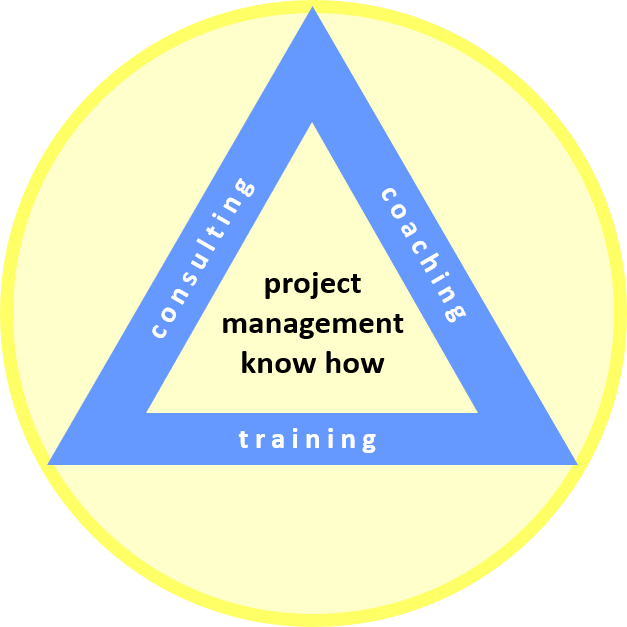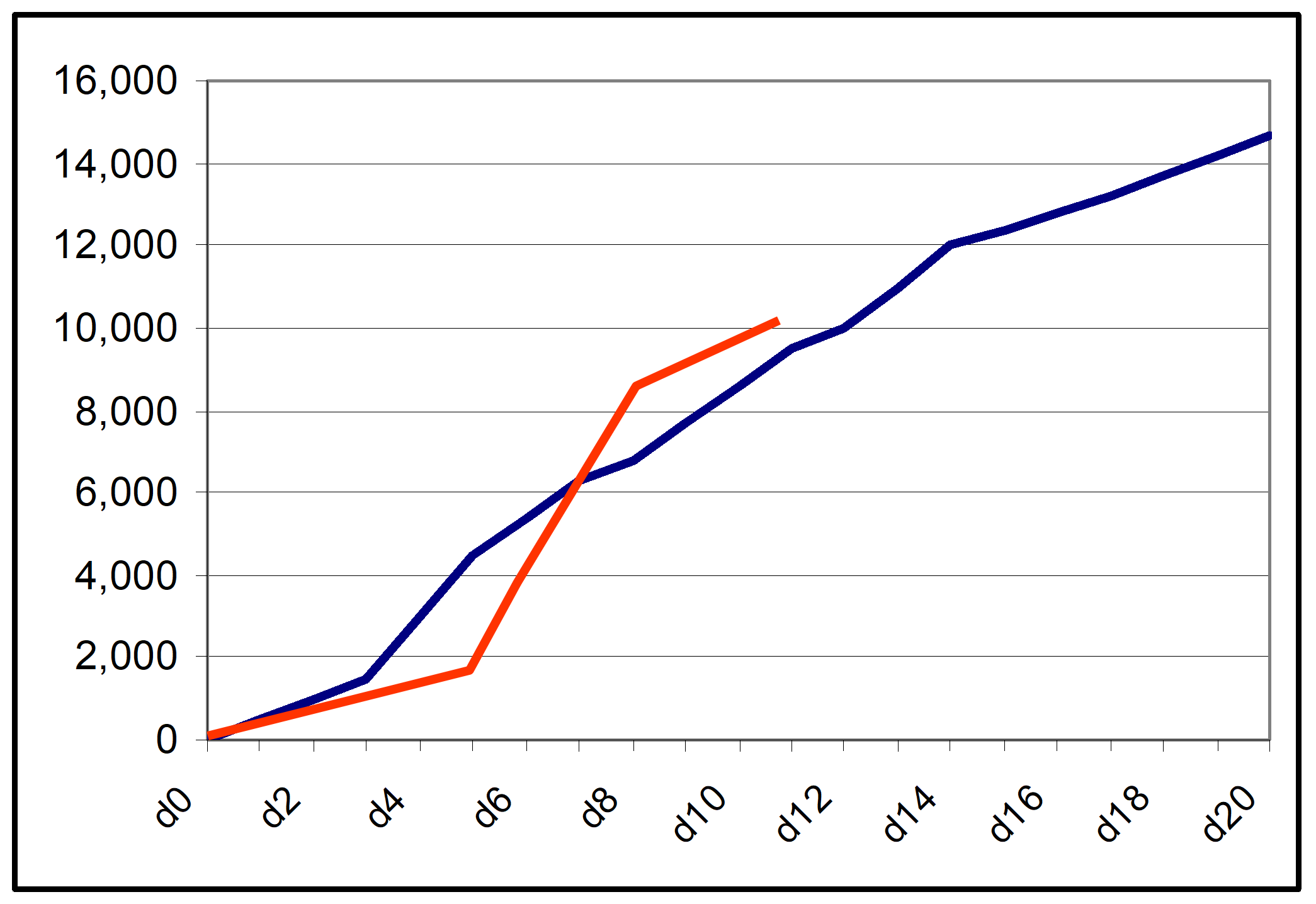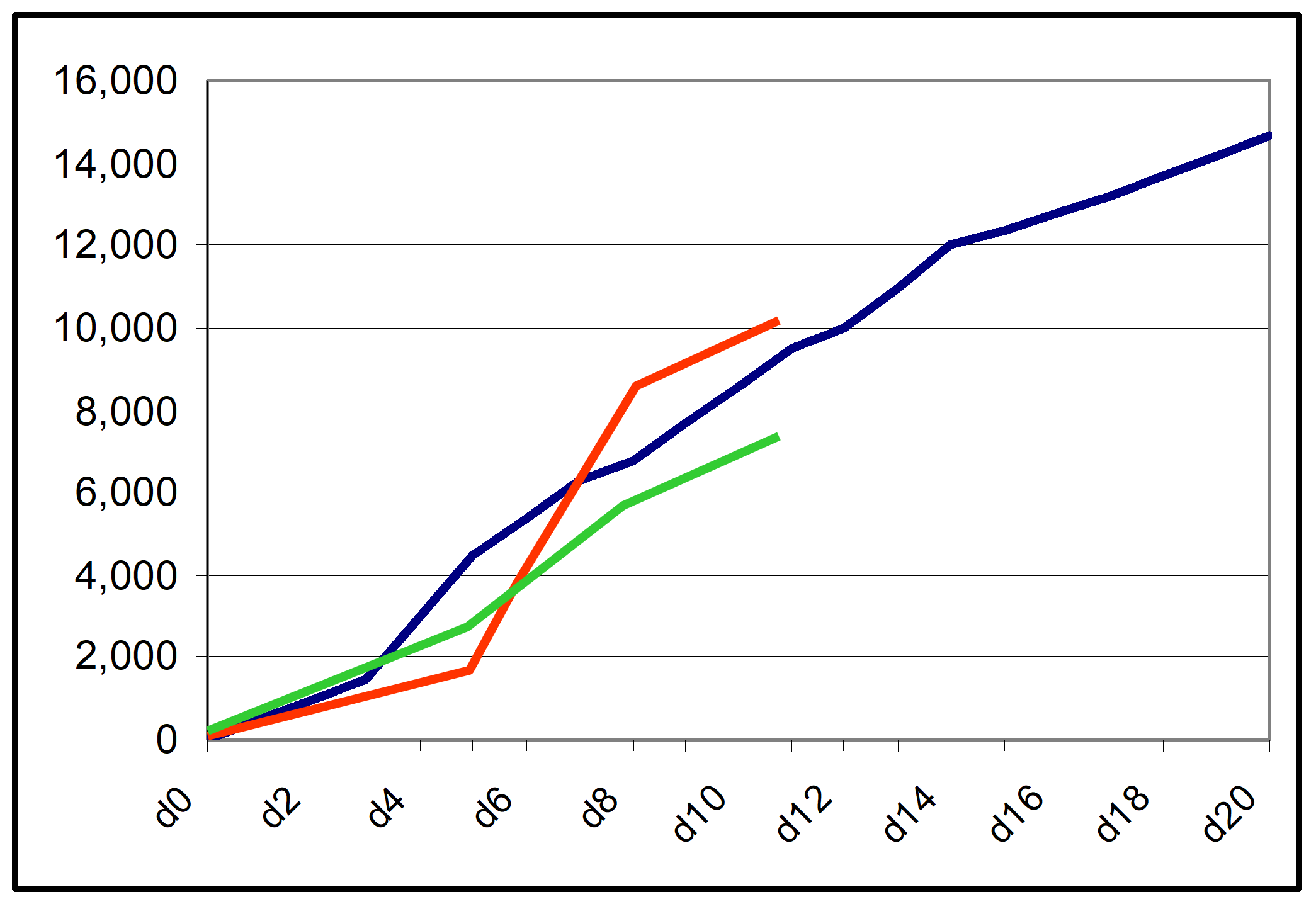- Home
- Implementation
- Project Cost Management
Project Cost Management
Published: 2011-02-20
Last updated: 2022-02-16
Project cost management corresponds to chapter 7 of the PMBoK Guide (A Guide to the Project Management Body of Knowledge, 2009) of PMI. Based on the description given in the PMBoK, it comprises all management processes that ensure estimating, planning, and controlling the entire project cost as it is necessary in order to create the project results as required.
Here, with project cost management, we refer to managing the project cost in implementation and closure phase and focus on monitoring and controlling the project cost. In general, an integral part of project controlling in project implementation phase is making sure that the actual cost of work is equal or close to the planned project cost. We make sure that we identify changes of project scope or time schedule as early as possible and quote them in form of change requests that cover all corresponding additional cost including those of extension of time (EOT). These change requests shall be fair for all involved parties. For preparation of a suitable change process during project planning, please refer to sub-section Contract Management.
In most cases, scope creep - additional, un-planned work – leads to time delays and additional costs (cf. sub-sections Project Scope Management and Project Time Management). If not covered by a corresponding change order based on the change process, we shall avoid any scope creep. Otherwise, we end up in a claim situation: we implement the change anyway, take and file all available project records of that case, and try to settle compensation for it in terms of extension of time (EOT) and additional cost later.
Sometimes, we encounter problems following our plan due to mistakes or errors. We misinterpret or misunderstand certain requirements or specifications and do not estimate and plan enough resources and / or duration for a work package; while implementing the plan, mistakes and errors happen, we need to correct them and have to repeat parts of the work. In either case, we need more time and resources than originally planned which leads to cost overrun. In other cases, things are easier than expected, and we need less time and resources than planned resulting in cost savings.
As a practical tool of project cost management in terms of monitoring the accumulated cost on work package level, we apply simple comparison of actual cost with planned cost.
In this example the blue line represents planned accumulated cost for the entire project of 20 days duration. The red line shows the actual cost until day 12. In general, we assume that the actual cost (AC) fits to the cost of work and work results until day 12.
In order to obtain this AC we need project time sheets. Contemporary time sheets are an essential part of the project records – not only for project time and project cost management but also for all claim-relevant events and problems. So, we have to make sure that all those who contribute to our project keep records about time spent, work done, and results achieved, for each individual work package.
Earned Value Analysis
Earned value analysis (EVA) is another convenient tool to support project cost management. To show the project status in terms of its cost, we determine how much work is done (or results achieved), and express it in terms of its Dollar value. This we call earned value (EV). Then we compare EV with the amount of work that should be done already (results that should be achieved already) which is planned value (PV) at that point in time. We can calculate
Cost Variance: CV = EV – AC,
or
Cost Performance Index: CPI = EV / AC.
- CV = 0 or CPI = 1 at a certain point of time indicate that earned value and actual cost are in-line. We are within the cost budget.
- CV < 0 or CPI < 1 at a certain point of time indicate that earned value is less than actual cost. We are over cost budget.
- CV > 0 or CPI > 1 at a certain point of time indicate that earned value is higher than actual cost. We are under cost budget.
To the example above we add the green line, representing EV by day 12:
On day 12, AC = 10,000, EV = 7,400,
leading to CV = EV – AC = 7,400 – 10,000 = - 2,600 < 0,
or CPI = EV / AC = 7,400 / 10,000 = 0.74 < 1; our project is over budget.
Simple comparison of AC with PV and the results CV and CPI, obtained with EVA, only serve as indicators of cost overrun. In order to cure problems we have to go down to the work packages and apply problem solving techniques.
Predicted Project Profit
Another aspect of project cost management is predicted project profit. If we know the project's revenue and its planned value (PV) at the time of project completion, earned value (EV) and actual cost (AC) at a earlier time, we can estimate or “predict” its profit at project completion:
Here, we assume that the current trend of how earned value and actual cost develop for the remainder of the project duration continues (this formula leads to a very conservative prediction). If we express profit as a percentage we obtain:
In the example above we assume project revenue of 18,000 at the time of project completion, corresponding to total cost PV = 14,800. On day 12 we have AC = 10,000 and EV = 7,400.With these figures, we predict the rate of project profit being -11.1% at project completion.
Summary
Project cost management requires a combination of different tools since one alone usually shows only part of the status:
- EVA, as indicator of cost overruns (or savings) on project level
- Predicted project profit on project level
- Problem solving techniques for affected work packages
Traditional PM
Learning Path Navigation
|
|
|
Return to Implementation Phase
Return from Project Cost Management to Home Page
|
|
|





Your Comments
Have your say about what you just read! Leave me a comment in the box below.